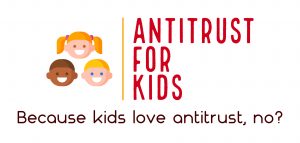Author: Molly Donovan
You might recall that Max and Margie are next-door neighbors on Lemon Lane.
In a strange turn of events, after Max was found liable for an illegal hub-and-spoke conspiracy against Margie, she let bygones be bygones and hired Max to procure materials for her lemonade stand and to develop new flavors of soft drinks for kids. In that role, Margie and Max agreed that, should Max ever leave Margie’s employ, he wouldn’t compete with Margie by working to sell any kids’ beverages within the city limits for a period of 2 years.
That was all fine until the FTC announced a proposed ban on non-competes, defining “non-compete clause” as a “contractual term between an employer and a worker that prevents the worker from seeking or accepting employment with a person, or operating a business, after the conclusion of the worker’s employment with the employer.” Substance is more important than form—so that if any agreement functions as a “non-compete,” under the FTC’s definition, it would be banned, too, regardless of its label.
Now Margie’s in a bind—does she undo her noncompete with Max? Does she try to language around the proposed ban? Does she wait to see if the ban comes to fruition? Certainly, due to their history, she doesn’t fully trust Max who she has trained at length (including in antitrust compliance), is privy to top-secret recipes, and has developed key relationships with Margie’s lemon suppliers, all in the course of his employment with Margie. Given all that, can’t he be stopped from competing against her in the event he works for another beverage company someday?
Here’s what Margie should know: the FTC has recognized two carve-outs to the potential ban—one for non-solicitation agreements and one for non-disclosures. Such agreements aren’t subject to the proposed ban because they don’t “prevent” workers from competing with their former employers. Instead, a non-solicitation would prevent workers only from soliciting clients or customers with whom the former employer has a business relationship. And non-disclosures would prevent workers only from using proprietary information learned during the course of employment in a new job.
If used as an alternative to a non-compete, these types of clauses should continue to be tailored to particular customers, products and geographic areas that are relevant to the employee at issue and the pertinent procompetitive justifications. An overly broad non-solicitation or non-disclosure could be said to function the same as a non-compete and therefore, become subject to the proposed ban.
Margie could consider other options as well. Perhaps a unilateral policy that deferred compensation or other incentive payments will be clawed back should a worker choose to compete, disclose confidential information in a new position, or disparage Margie in some way. Such a policy is not a contractual agreement because it’s unilateral, and it doesn’t prevent Max from competing—it merely discourages him. (Of course, Margie should be sure a clawback is legit under other laws like ERISA).
Further, if Margie is considering a stick, she might also consider a carrot: a unilateral incentive program for workers that don’t compete within a specified time period or a specific geographic region, etc.
 The Antitrust Attorney Blog
The Antitrust Attorney Blog










